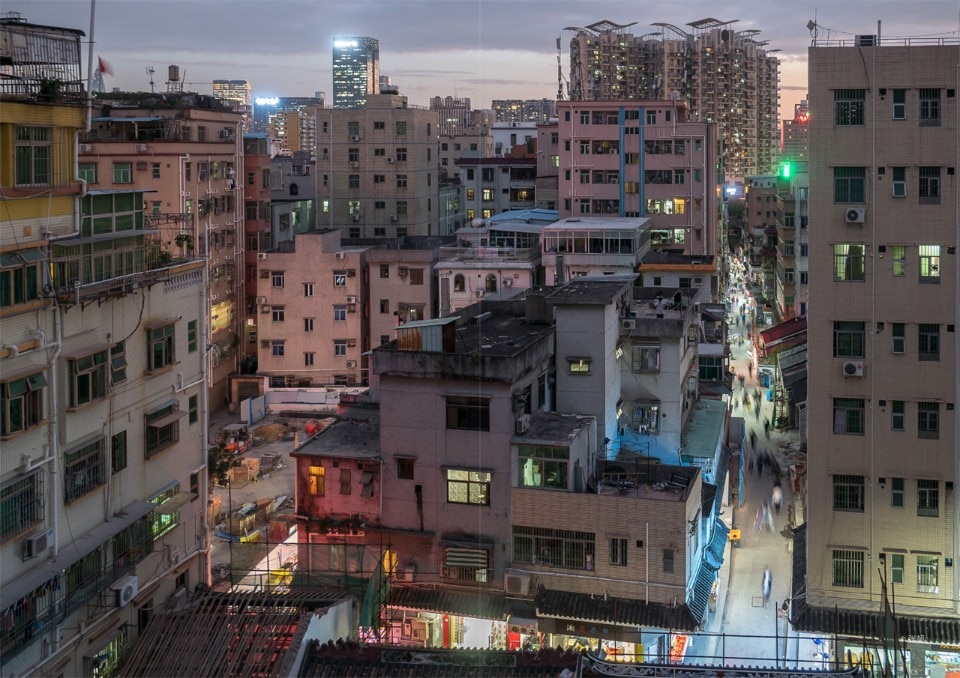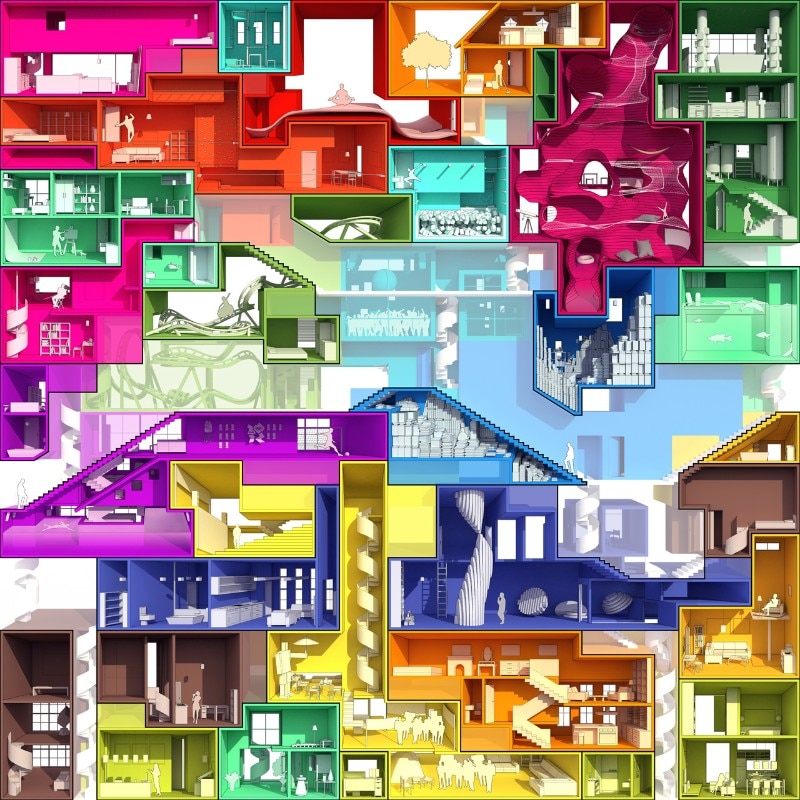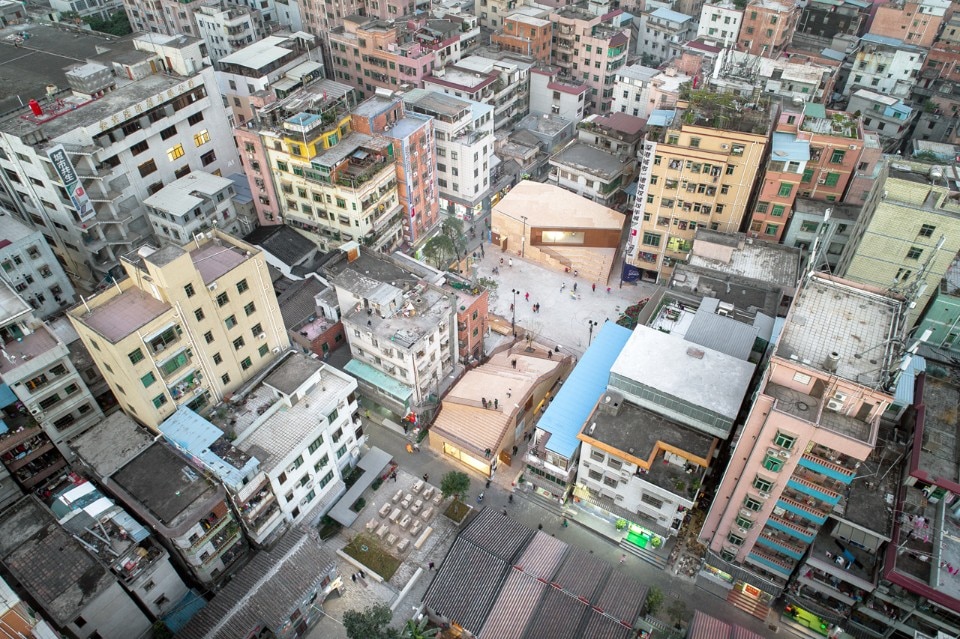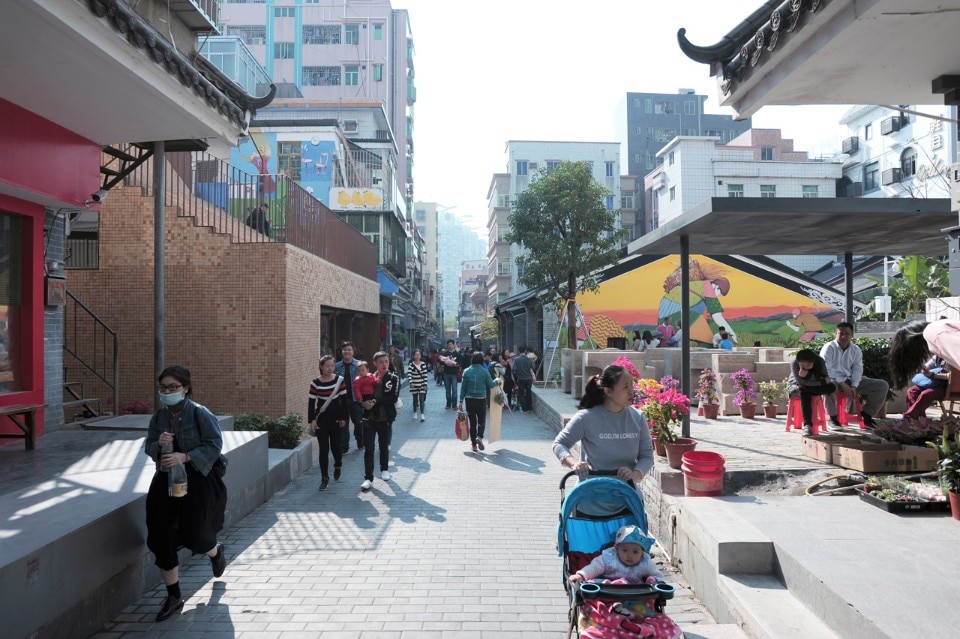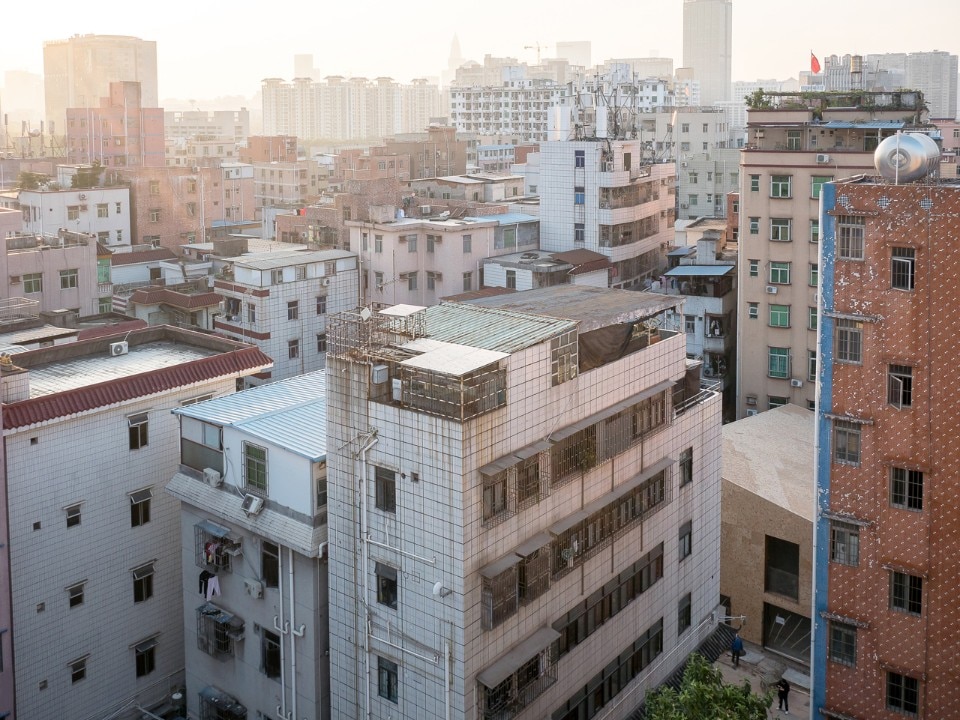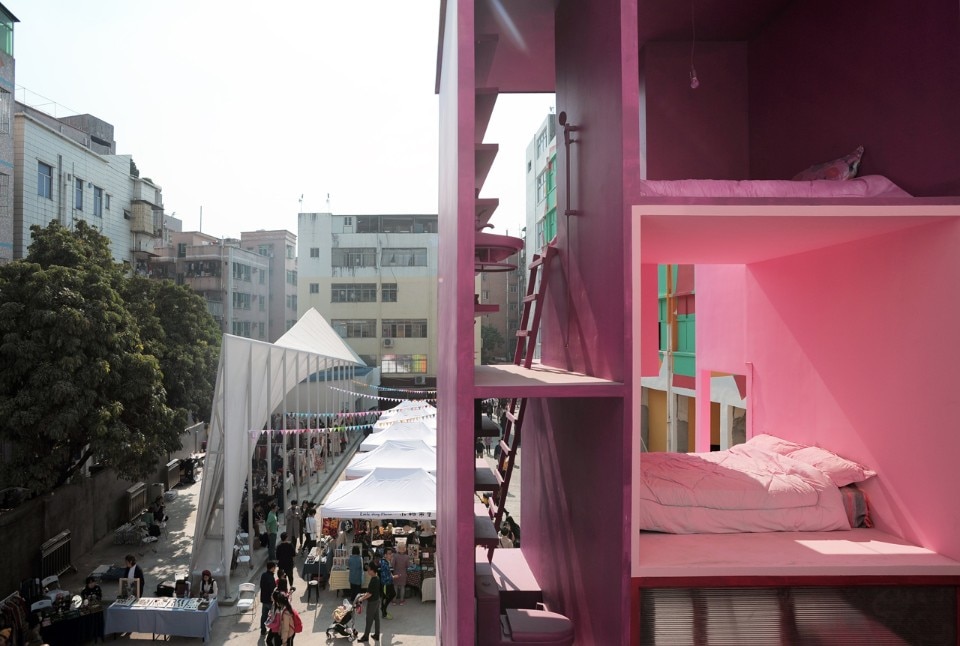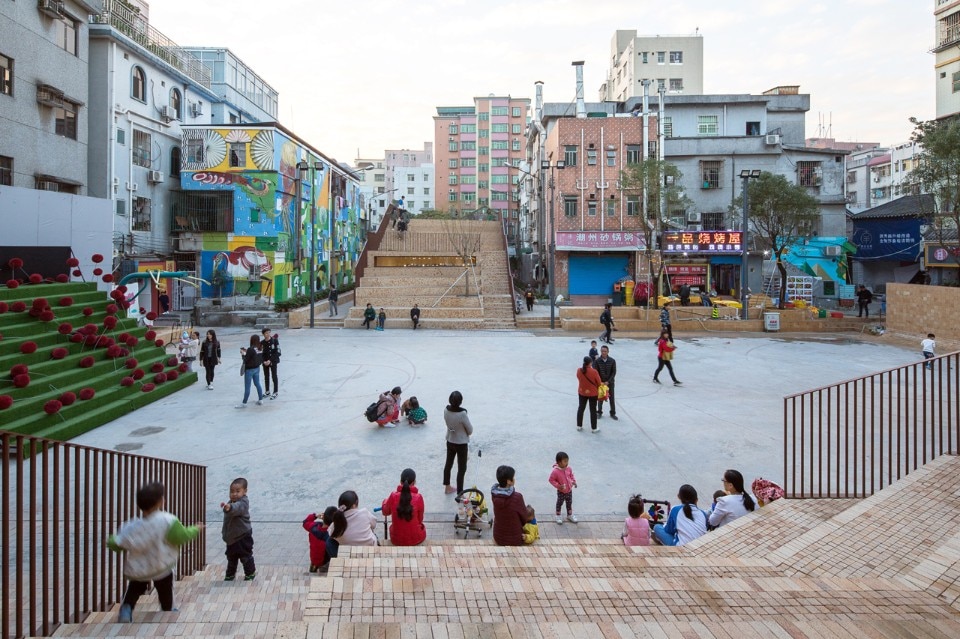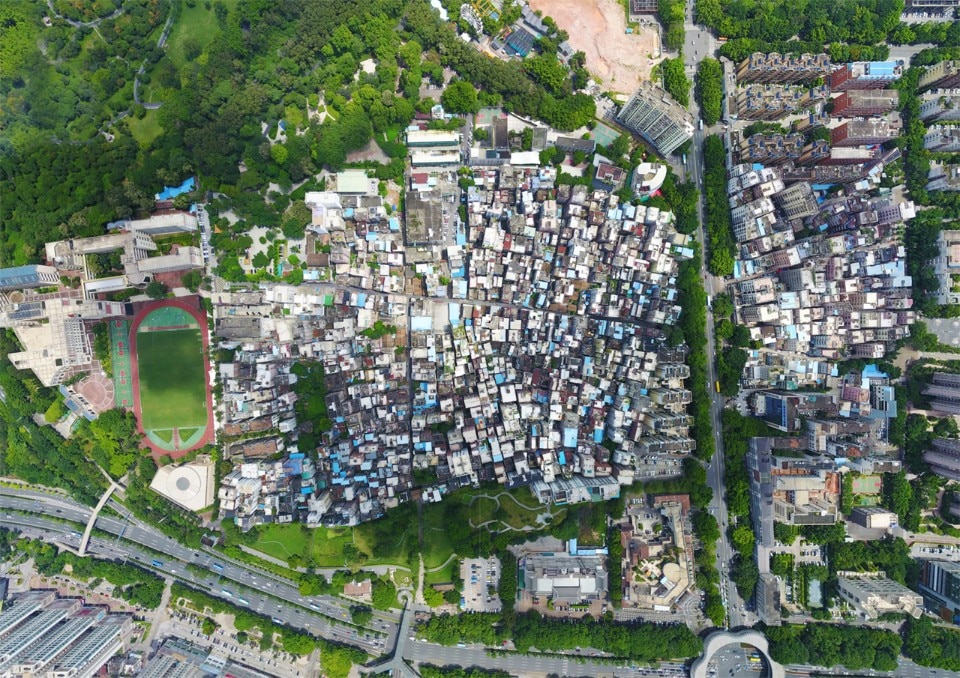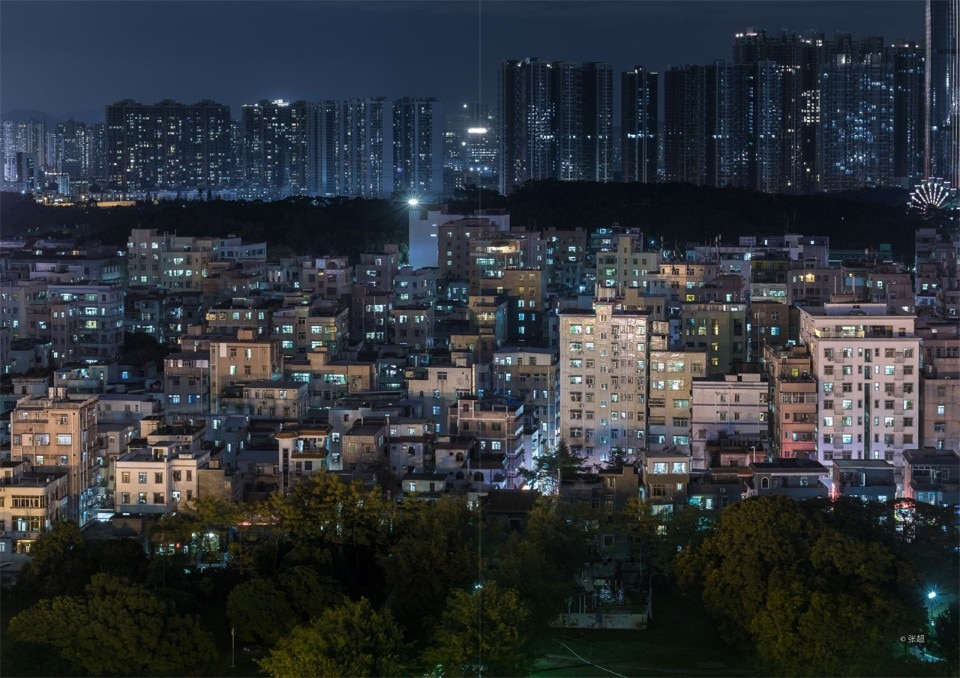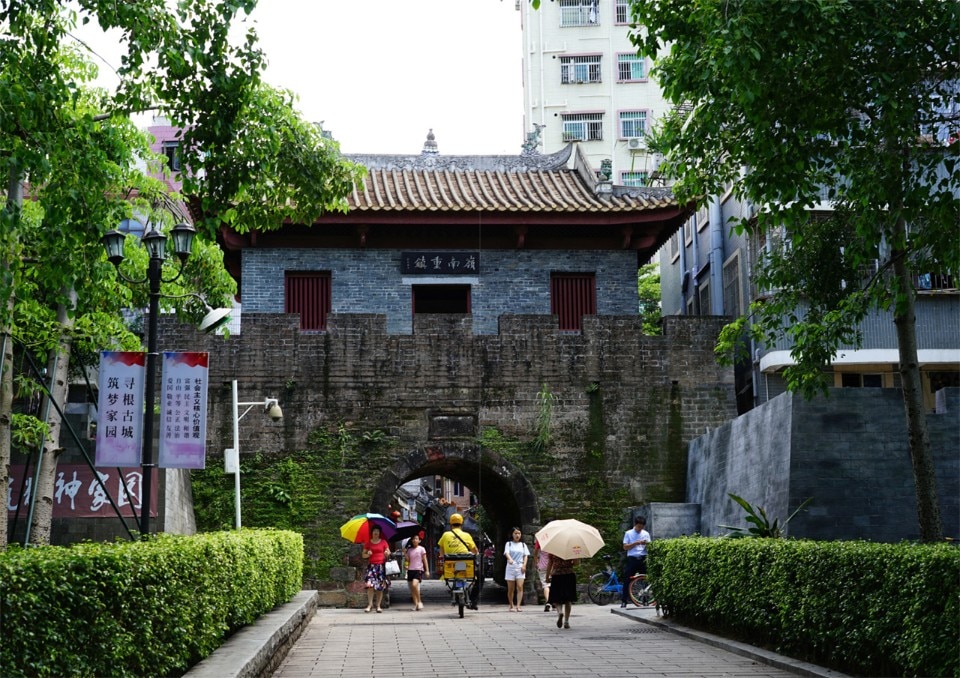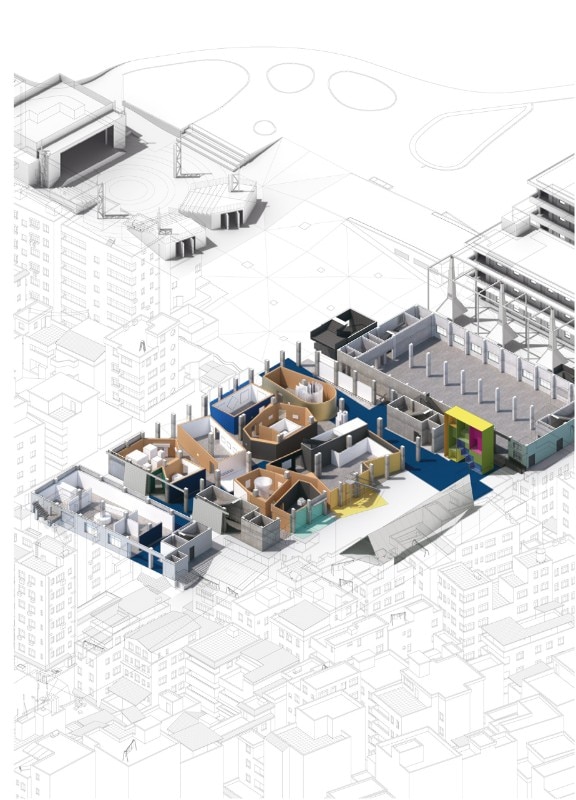Bi-City Biennale of Urbanism/Architecture (UABB) is the only exhibition in the world to explore issues of urbanisation. It has opened last December in Nantou Old Town, a complex symbiosis of a historic town and a contemporary urban village in Shenzhen. UABB2017 has a theme of “Urban Symbiosis/Coexistence” or, as the curator interpreted “Cities, Grow in Difference”. The topic focuses on the Pearl River Delta were one of the emergent issues is the Urban Village, appearing on both the outskirts of Shenzhen and Guangzhou. They are commonly inhabited by the poor, congested, and with social problems. Only in Shenzhen, there are over 1,000 urban villages, home to 10 million people. Now this delicate stratification of interventions is vanishing rapidly under the pressure of the urban renewal. The potential consequences are the expulsion of millions of migrant workers out of the city, creating problems of labor shortages and overloading of the public transportation system. It is now vital to face this challenge and making the correct moves to prevent future mistakes.
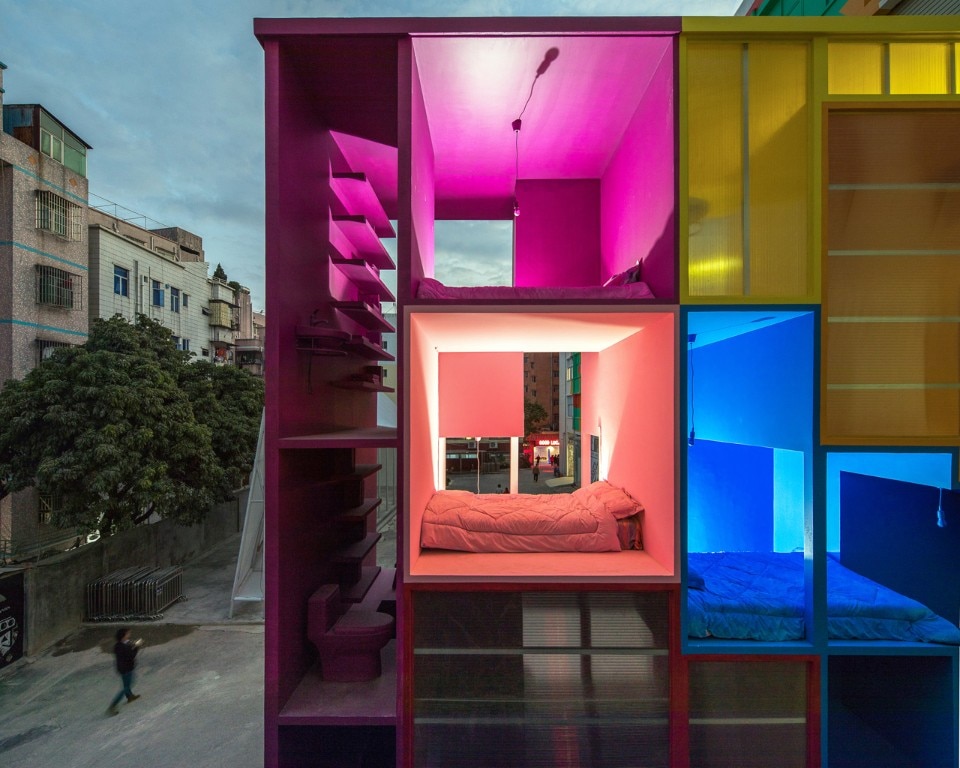
How different is the exhibition compared to the previous editions and which reaction would you like to produce this time?
For the first time, focusing only on urban villages makes the theme of the exhibition a genuinely urbanistic one. One of the main issues was to break through the limits of the profession by treating the topic in a multi-disciplinary and social way. The three sections: “Global South”, “Urban Village”, and “Art Making Cities” create a clear hierarchical structure to narrate the story and a framework to follow for the exhibition to be a real new start for the urban village. We see the future of Natou as a platform where we will continue to research and to apply pragmatic solutions to its context. At Urbanus, we have been studying it for the last 15 years. This urban system had always played a vital role in the first stage of the city’s rapid development. Urban villages in Shenzhen have a strong local culture rooted in history, and our goal is to respect its culture and rediscover its values while the city is building up its own cultural identity.
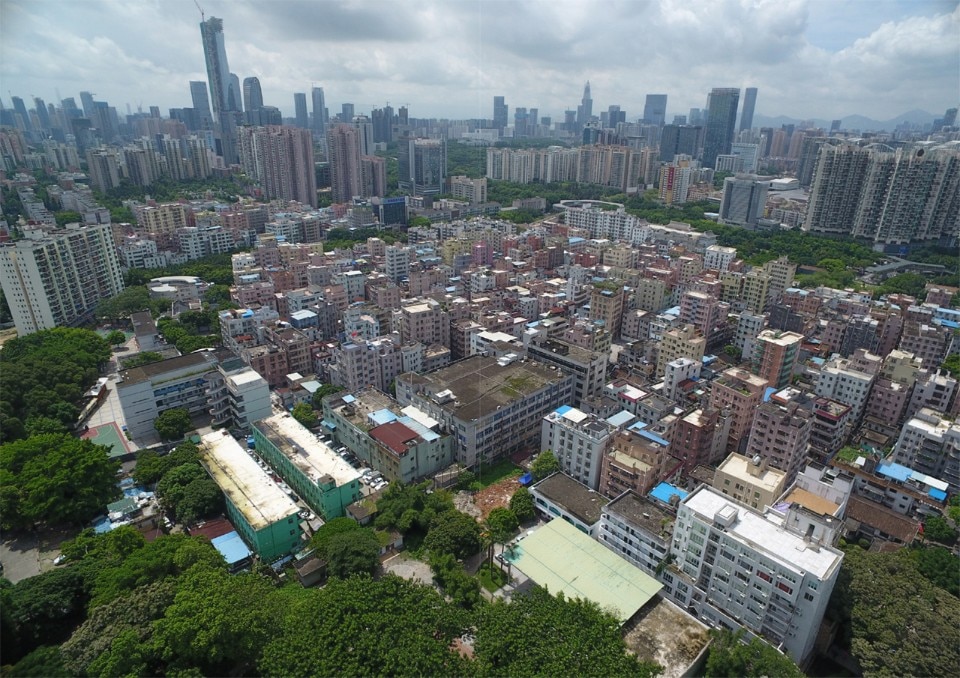
What do you think are your most significant achievements?
It was the largest Biennale in UABB history for the number of exhibitions and participants. We believe to successfully create a “wake-up call”, attracting a wide range of attention from prominent figures. Experiencing immense pressure from rapid urban growth, the urban village of Nantou underwent a spontaneous development due to its historical legacy and local policies. In a rush to meet growing housing demands, villagers built higher levels atop the regulated two-storied residential buildings resulting in high-density blocks of “hand-shaking towers”. The local governments have a dilemma between protecting historical heritage and renovating to improve quality of life.
Which are the practical actions that can preserve the identity of the Urban Villages and give the possibilities to upgrade the inhabitant’s life?
We sustain the self-grown urban fabric based on the original street grid, strictly connected with the type of life the residents we think is worthy of preserving. Not only the historical building relics need to be protected, but also valuable buildings from the 1950s to the 1990s. The pressure that urban villages face, especially ones located in city centers like Nantou, include the extremely high monetary value of the surrounding land. As a result, the land price of urban villages become incredibly devalued. To prevent the city from devouring urban villages, the only way might be to raise the land’s value slowly. This slow process of gentrification may give urban villages a chance to survive through balanced urban renewal. In the end, the urban villages could remain a place for low-income migrant workers to stay in the city and improve their lives with rising income.
How would you judge the actual effort and policies of the public institutions?
Unfortunately, society is just starting to realize the most significant challenge facing urban villages and its extinction. So far public policies had done nothing to prevent them from disappearing. I am glad to see the recent awareness that has come to the authorities and intellectuals. Now there are social forces jumpstarting renovation practice in urban villages, from large-scale developers to small real estate companies and even individual teams. Many renovation cases will be developed in the next few years. As Urbanus, we will continue to track their progress and work to contribute to preserving our heritage.
- Exhibition title:
- Bi-City Biennale of Urbanism\Architecture (UABB)
- Theme:
- Cities, Grow in Difference
- Opening dates:
- 15 December 2017 – 15 March 2018
- Curators:
- Liu Xiaodu, Hou Hanru, Meng Yan
- Main venue:
- Nantou Old Town


